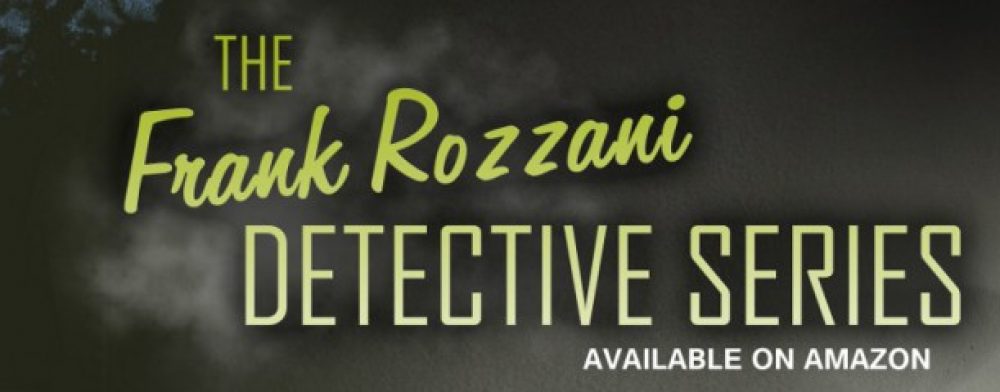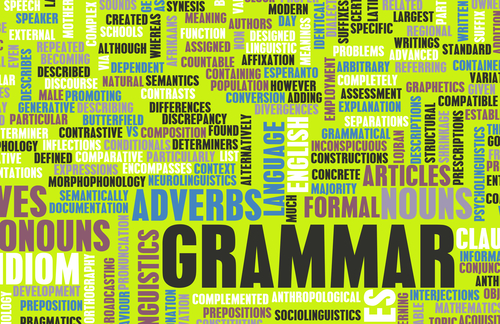This post will drill down into a topic with which I struggled in my early writing. That topic is dialog; when to use it, how to use it, what to avoid, etc.
Before I dive into this topic, I wanted to give a special shout out to my editor who not only reminded me that the punctuation goes inside of the quotation marks, but constantly reminded me that I should “show vs. tell” and sent me links to writing tips to help my early writing.
SHOW VS. TELL
This is one of the hardest paradigm shifts that I had to deal with. I come from a technical, corporate world. This background has affected my writing. I can write narrative and describe business and technical situations very effectively. When writing fiction, however, using too much narrative can come across as dry and uninteresting. It’s much more effective to let your characters tell the story through their conversations.
Sometimes narrative can be effective if you’re describing the surroundings or a complex situation. I’ve read books by authors like Tom Clancy and Dan Koontz. Koontz is famous for taking three pages to describe a single tree that his character is passing (maybe a slight exaggeration). Tom Clancy spent pages and pages of his books describing the movements of a military exercise. I have literally skipped 10-20 pages of his books in this type of section and have not missed a single element of the plot. The point here is to look at the narrative you’ve written and determine if it can be better told by your characters through their conversations.
MAKE IT CONVERSATIONAL
Dialog is meant to simulate an actual conversation between individuals. With this in mind, try to make your dialog sound authentic. People speak in contractions, for instance. Look for “Do not” and make it “Don’t”. Change “Is not” to “Isn’t”. You get the idea.
Also, if your character is from a certain part of the country where there may be specific vernacular or idioms in the language, be aware of this and make it part of your dialog so the reader can feel the authenticity in what is being said. Be consistent, however. Don’t wander in and out of an accent or regional dialog. Your readers will spot it and you will lose credibility.
I’ve seen some articles that have said you shouldn’t try to write in a dialect or accent. I’m not sure if this is valid in terms of reality. If you have characters from the deep south or Cajun country and they don’t speak with somewhat of an accent or use colloquialisms, you may lose some credibility. Similarly, you can use certain words to indicate the character’s level of intellect or education.
Remember, it’s a conversation. In real conversation people interrupt each other and say things without thinking. Your characters have to do this as well. I find that, when I’m writing dialog, I sometimes get lost in the characters and surprise myself with what they’ve said when I finish writing a section. Just let it flow and worry about punctuation and dialog tags when you’re done.
DIALOG TAGS
When I look back at my early writing (before it was edited) I see that I was obsessed with telling the reader who was speaking. As I’ve written more dialog, I have realized that a lot of these dialog tags were unnecessary. This is especially true when you only have two characters in the conversation. If John and Joe are speaking you don’t need to tell the reader who is speaking after each sentence.
Instead of this:
“Who was that girl?” Joe asked.
“I think that was Bertha from accounting,” John replied.
“Is she single?” Joe asked.
“I don’t know, but I think you should take one for the team and find out,” John said.
“I’ll ask her out to lunch,” Joe said to John. “Then we’ll know for sure.”
Try something like this:
Joe saw John staring at the new girl as she passed. Finally, he decided to talk to John and find out who she was.
“Who was that girl?”
“I think that was Bertha from accounting.”
“Is she single?”
“I don’t know, but I think you should take one for the team and find out.”
“Okay. I’ll ask her out to lunch and then we’ll know for sure.”
The introductory sentence sets up who is initiating the conversation. From there, it’s just a back and forth. If the dialog is long, you can describe the characters’ actions or facial expressions to get the reader back on track with regard to who’s speaking. If you have more than two people, it becomes more important to use dialog tags. Use your best judgement. The best approach might be to leave all dialog tags out, read your dialog, and add in tags where you think the speaker is not clearly identified.
DON’T USE ADVERBS
Adverbs can make your reader feel stupid and make you look like Captain Obvious when you use them in your writing. Those pesky words that end in “ly” are a crutch that lazy writers use in their dialog and they should be avoided.
Look at the following dialog as an example of what not to do:
Jim punched Jeff in the nose.
“Why did you hit me?” Jeff asked angrily.
“Because you needed to be hit,” Jim responded smugly.
“Well, that just cost you your job,” Jeff said strongly.
Now that’s an ugly exchange in more ways than one. Let’s try a more creative approach:
Jim punched Jeff in the nose.
“Why did you hit me?” Jeff said while rubbing his nose. His voice rose in volume as he questioned the actions of his long-time employee.
“Because you needed to be hit,” Jim answered as a grin emerged on his face. His voice was calm and confident.
“Well, that just cost you your job,” Jeff said as he straightened his tie and dabbed at his nose with a tissue.
You can see that there is more descriptive language. Remember that conversation between humans involves body language as much as spoken word. Describe what that body language looks like. It will convey the emotions in play.
I’m sure there are more tips concerning dialog. The beautiful thing is that, as writers, we should never stop learning and growing in the craft. I learn something with every book and short story that I write. I also learn a lot about dialog through reading the work of other authors that do it well like Elmore Leonard, Harper Lee, and John Steinbeck.





This article Don is brimming with good tips…Has to be reblogged!
I like to use adverbs for certain situations on account of not being able to leave humour out of my narratives.
They are useful when there’s some interlude for sardonic comments in natural speech such as:
‘Of course, I was on difficult ground, being officially and heroically dead,’
Or for a comic interlude to reflect our natural inclination not to blame ourselves:
‘The outraged announcement that Flaxi had put her knocked big toe against one cowardly and sly bed-leg forced Karlyn shove bread into her mouth to stifle the howls of laughter Flaxi would certainly not appreciate’
In short I feel the adverb is useful when wishing to exaggerate…Although you must be careful not to over-do the business….Which is why when I will carry out one of my re-reads of the draft I will be using Ctrl + F and entering ‘ly’….Maybe it’s painstaking but it works for me.
LikeLiked by 1 person
Adverbs can be useful in the situations you’ve illustrated. More than one famous author has spurned their use only to not practice what they preach. (Look for a blog post on this topic in the future). Thanks for your comments. At the end of the day, you have to be aware of the rules and then break them as needed.
LikeLiked by 1 person
And thank you Don for advice.
One of the aspects of writing I enjoy is breaking rules and thinking to some spectral editor/critic:
‘So what are you going to do. Report me to Grammar & Syntax Police?’
LikeLiked by 1 person
Those who can, do. Those who can’t, critique.
LikeLiked by 1 person
Quite!
LikeLiked by 1 person
Reblogged this on heroicallybadwriter and commented:
Don can be relied upon to supply a wealth of useful information on the art of writing….Here is one valuable example concerning dialogue.
LikeLiked by 1 person
Thanks for sharing this and for the kind words.
LikeLiked by 1 person
My pleasure Don
LikeLiked by 1 person
Reblogged this on DSM Publications and commented:
Check out this post from my author blog.
LikeLike
Reblogged this on Anna Dobritt — Author.
LikeLiked by 1 person
Thanks for sharing this, Anna
LikeLike
Excellent suggestions! Your disdain of adverbs is shared by the master Stephen King!
LikeLiked by 1 person
Very true. His book, On Writing, is one of the best on the craft.
LikeLiked by 1 person
Yes it is!!! But let me tell you, your blog here is not too shabby my friend. I found it being reblogged by a friend. You have yourself a follower now. Keep up the great work and thanks!
LikeLiked by 1 person
Thanks, Ryan. I appreciate it.
LikeLiked by 1 person
Good tips. I spend at least three posts a week on practicing dialog. I do it without tags so that I get used to telling a story with nothing but conversation. If the reader is confused then I have failed. Super post, Don
LikeLiked by 1 person
Thanks, John. When I wrote this post I looked back over some of my work. I used to use tags a lot more than I do now. I guess I’m evolving.
LikeLiked by 1 person
I love the tags that go, “Yes,” John said while he ran in and out of the walk in freezer. Or even simpler. “Yes, ” John answered.
LikeLiked by 1 person
Reblogged this on Chris The Story Reading Ape's Blog.
LikeLiked by 1 person
Thanks for sharing this, Chris.
LikeLiked by 1 person
Welcome, Don 😃
LikeLiked by 1 person
Terrific tips, Don. Like you, I love it when I just “let” my characters talk. What I learn from them (and the story) can be astonishing. But I do like my adverbs. (ack) You give an excellent example here of why the story sounds better without them.
LikeLiked by 1 person
Thanks. Like I mentioned in another comment, it’s important to be aware of the rules so that you can break them occasionally.
LikeLike
Thanks, Don for this thorough and informative post. 🙂 — Suzanne
LikeLiked by 1 person
Thanks.
LikeLike
Sorry but I’m one who believes that dialect and accent should be kept to a minimum – more than a hint and it is downright boring. Same applies to conversations that don’t advance the story, give character insights, or intentionally mislead. Waffle doesn’t add interest. Although writing a book ask yourself if inane exchanges would appear in a screenplay
However having said that I am a dialogue writer – probably because I write crime. Certain genres do lend themselves to dialogue. Mine probably works out at about 3/5ths dialogue.
LikeLiked by 1 person
In some circumstances, like in period pieces or in cases where a culture is being invented, the dialect and accent can be important. If they are used, however, they had better be authentic and not condescending. Thanks for your comments, Lindsey.
LikeLike
Let me know how you get on with reading ‘Th Canterbury Tales’ in Chaucer’s original format 🙂
LikeLiked by 1 person
Read it as part of a college course and enjoyed it thoroughly with a bit of help from a professor with the words that were extinct. It is quite bawdy in spots.
LikeLike
Excellent post, Don. I made all those mistakes when I started out. The examples are great for making your points. 🙂
LikeLiked by 1 person
Thanks so much. I made those mistakes as well. We learn with each piece that we write.
LikeLiked by 1 person
Reblogged this on Loleta Abi.
LikeLiked by 1 person
Thanks for sharing this, Traci.
LikeLiked by 1 person
You’re welcome, Don!
LikeLiked by 1 person
Pingback: Author Inspiration and Last Week’s Writing Links – Staci Troilo